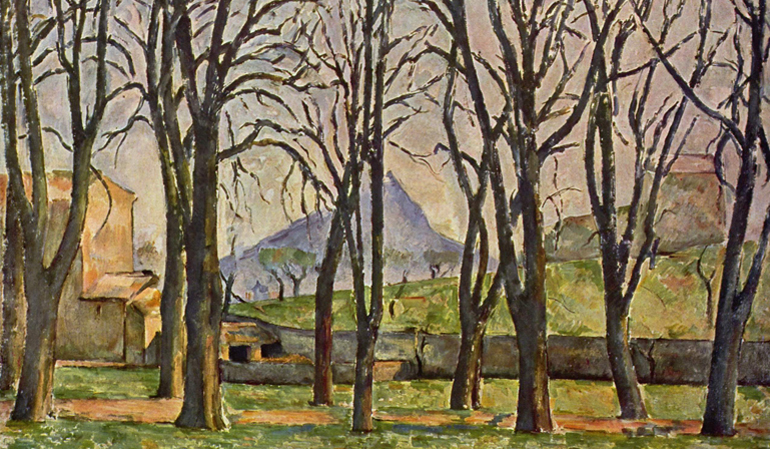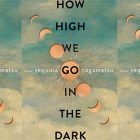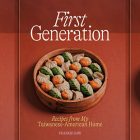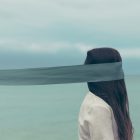Art and Sustenance

One day, a perfumer, teaching me about raw materials, placed a plastic bag in my hand, saying only, “Exciting things!” The smell wafting from the bag like a forest floor, and deeper, stranger, more intimate. It caught in my throat and stayed there, like a gag reflex, like appetite.
“Do you know what that is?”
I shook my head. A hundred associations clamoring to be said, but none of them quite right, none of them all—chocolate, sweat, sex, rot, forest floor, ash, shit, velvet, skin, hair, incense, cherries, kissing, churches, mosques, a burial shroud, a body dead, or alive. Alive.
“Raw musk.”
When I went home, still reeling from that treasure more than diamonds I’d gotten to hold, to smell, I picked up Stephanie Danler’s feverish and exultant novel, Sweetbitter, again, and turned to this passage, that encapsulated it all:
“Do you know what abundance is?”
I shook my head again and plucked another grape.
“You have been taught to live like a prisoner. Don’t take, don’t touch, don’t trust. You were taught that the things of the world are flawed reflections, that they don’t demand the same attention as the world of the spirit. It’s shocking isn’t it? And yet, the world is abundant—if you invest in it, it will give back to you tenfold.”
“Invest what?” (. . .)
“Your attention, of course.”
That is what art does, for me, the process—raw and arduous and transcendent, of learning. The world unfurls for you. Suddenly, there is no fare too meager to make a life on.
My grandfather is an artist. He sketches in charcoal and pencil, in oil pastels, and he paints in watercolor. He would have been a full-time, “proper” artist had he not grown up a person of color in apartheid South Africa. He taught himself, through long hours alone, watching. He always says the best way to learn about the world, to get ideas for paintings, stories, is to sit very still, near a patch of grass. Bare ground will work, too, but grass is better. Take a little square in your mind. Make it maybe twenty-five centimeters square. Put it anywhere. Now watch what happens in that space. Is there an ant making its way across it? A torn bit of ticket stub? A sweet wrapper? A ladybird? A seedling? There it is. Enough. More than enough to paint, certainly enough to describe.
My grandfather’s favorite thing to sketch or paint is trees. When I was little, there were ghost stories about willow trees and women. The autumn leaves were the height of rapturous beauty. When I went to Michigan, years later, and saw masses of autumn leaves falling (plain “fall” they called it here, and how apt, how much in just that word), I wanted to record it all, capture it, tell my grandfather, bring him across the Atlantic to watch this: a hundred thousand gold coins, gold butterflies, not dead leaves but living things, taking to the air and dazzling it.
I can’t walk or drive past bare trees without thinking of my grandfather, without thinking of line, form, the pathos of bareness, the eloquence of contrast, silent writing. He taught me to sketch and paint. I painted tiny gardens of wildflowers and ladybirds, seascapes, scenes from my favorite novels. But what stayed more than anything is this frantic, ardent attention to detail, an appetite for the material, wherever it shows itself. Now, I take pictures: of passersby in doorways, light through our apartment curtains, feathers and stones on the road, my husband lit by the morning sun. My grandfather taught my eyes: there is always something. The world, everywhere, is asking for your attention.
When I went to art school in Michigan I was coming out of years of the blurred, sore aftermath of trauma. I lived in a fragmented world, one that my mind could barely make shape or sense of. Still, sensory details remained: mid-afternoon light through classroom windows, the dazzle of the sun in the oak leaves at the exact moment the bus turned off into a particular street, my breath blue in front of me in the winter. Even then, there was something, enough. I wrote and wrote. Fragmented strange little word-sketches. No plot, no rhyme. But a hand reaching out to the world still, touching and snagging on the jagged details. It got me into an arts boarding school, which saved my life.
There, one of my teachers insisted that if we were going to write poetry, we had to go out into the surrounding woods and use what we found there to make a drum, to make pen and paper. He reminded us again and again, of Mary Oliver’s assertion: attention is the highest form of prayer. We drummed in a circle with percussion students, we swept each other into circles of rhythm, repetition, the raw backbone of poetry. Learning through the senses what the mind and heart needed most.
In the woods, my senses came back to me, slowly, and then vividly, so that everything, the air itself, was rarefied and alive on my skin. The loamy scent rising from the ground after the rain—salt and moss, dust and wood, rot, sap, the way water went into the patterns of our bones, the awareness of water—of river and lake. Snow falling on a sunny day, shards of diamonds set afire by the sun so that the world was dazzled, and it was all of it, it was Rilke’s angels and the simple wordless knowledge of the body remembering, remembering, tracking season and tide, with the goldenrod foaming at the edges of the woods where the deer would disappear quick, urgent, and silver into the dusk, in winter the lake on fire from the sun on the ice, and in spring the sticky green leaves everywhere, the heart breaking with it. In the midst of all this of course, reading Ivan Karamazov says that as long as there are the sticky green leaves in the spring he will go on living, drinking life to the dregs. And here they are, those sticky green leaves, calling out just by living.
Firelight dappled my teacher’s face as he read us poetry beside the Boardman River. Peter Matthiessen came to visit us, the air around him still mountain air, still rarefied, and he said, “Pay attention, pay attention, pay attention. Because your life is moving very fast.” Another of my dearest teachers taught us to make bread, stew over the fire. I stayed with her for a few healing weeks, with her husband in the house they’d built themselves. I stayed in the loft they called “the bird’s nest.” Resting like a swallow in the eaves, winter at the windows—coyote cries in the night and white light of the morning, her describing, rapt, her trip to Italy, the statue of David, her days as an actress.
We saw deer in the snowed-over fields on our way home, learning to fall silent quickly, learning the patience of the body as it moves in relation to another species, a wholly new and alien life to our own. Imagine the world of a deer. Imagine what worlds around us, always. We ate salted rosemary chocolate, handmade by one of her friends. I was speechless so much of the time, my eyes and ears and nose and heart just watching, watching, drinking to the dregs.
This is what love does, I have said it before: when Adam Zagajewski describes in fevered detail everything from the paving stones to the visiting professors of Lvov, that land lost and never wholly gone, it is love that keeps us awake, makes the world so full. I watched someone I loved map the northern stars in spilled salt on a table. If you love something, learn it by heart. We were taught in our writing, don’t just say flowers, trees, which ones? If you love a thing, learn its name. I talked for hours with a writer whose door was emblazoned with Flannery O’Connor and her peacocks—vivid and undefeated, ragged and magnificent. We talked about angels, about being so young your blood felt full of voices. How even at the bottom of suffering, something our nerves seemed so attuned to, there is a door. Even there, there is a door.
Years later and an ocean away, I thought of her on a day clear as a bell, burning with marigolds, and just as I did, stopped dead on the street where I was walking: there in front of me, straight as an arrow: a peacock feather on the ground. So, I learned: the world is never empty. Some things never really leave us.
Learning from artists, how to write, to draw, to see, taught me of bounty. Their insistence, their calling, always, attention to the smallest things, taught me the most precious kind of survival: the abiding joy and knowledge that there is always something. Pay attention, and the world rewards you with sustenance: names, loves, echoes—always something to write, see, smell, paint, remember. How could I abandon a world so full, so rich?
Now, learning a new art, a perfumer I apprentice for takes down a jar from the shelf, paints a line of tincture across her arm, waving it to let the alcohol dissipate. Smell. Oakmoss, pure, and gathered from a location kept secret. It smells of two dark eyes like birds. The scent prowls. It is a vivid ghost on the skin. Wet earth and spilled wine. Revelation. She puts a plastic packet into my hands, saying only, “Exciting things!” And inside, raw musk. I stare at it as if she’s filled my hands with diamonds. It might as well be diamonds. Revulsion and transcendence, here. The smell of a hundred aphrodisiacs and the scent mixed into the mortar of sixteenth century mosques so even now worshippers smell its breath on the air.
The raw stuff of life, of history and worship, sex and decay, here in my hands as I learn each scent, as I learn new art. Resting so, in my hands, in a space of the world still less than twenty-five centimeters square.



